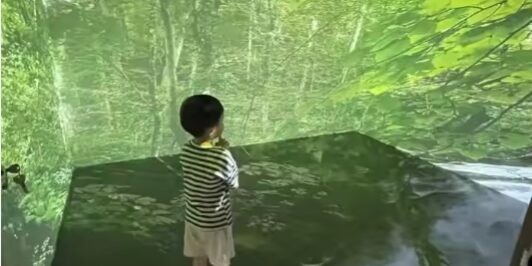Introduction
In today’s digital age, static displays are a thing of the past. The new frontier in exhibitions and entertainment lies in dynamic, interactive projection, with LiDAR technology at the heart of this transformation. By integrating LiDAR into wall projection systems, venues can elevate engagement levels and immerse players in a vivid, responsive environment.
1. What Makes LiDAR-Enhanced Wall Games Unique?
Unlike traditional projections, LiDAR-enhanced wall games offer real-time interaction by tracking movement and responding instantly. LiDAR sensors accurately detect motion, allowing players to engage directly with the display, whether by touching, gesturing, or throwing a virtual object at animated characters on the wall.
2. Interactive Wall Projection: Merging Virtual and Real Worlds
Using LiDAR, wall games combine the digital and physical realms. For example, when players hit a target on the wall, the LiDAR sensors trigger animations that cause characters or objects to respond and move. These layers of interactivity create an immersive experience, bringing the virtual and real worlds together in a way that captivates audiences.
3. Advantages of LiDAR in Immersive Gaming
- Realistic Feedback: LiDAR’s precision enables highly responsive feedback, such as triggering special effects or new animations when a player reaches specific points.
- Inclusive Fun: The multi-touch capability allows several people to play at once, making it suitable for children, families, and social gatherings.
- Space Efficiency: LiDAR-based interactive walls require minimal setup, making them ideal for both large exhibition halls and compact entertainment venues.
4. Diverse Applications: LiDAR Games Beyond Entertainment
The applications for LiDAR wall games are far-reaching:
- Corporate Events: Interactive walls engage attendees and create memorable experiences at corporate gatherings.
- Hospitality and Retail: Hotels and stores can integrate interactive wall displays for unique customer experiences.
- Educational and Interactive Museums: By making learning interactive, LiDAR walls enrich museum visits and captivate young audiences.
Conclusion
LiDAR technology is adding a magical touch to interactive wall projection games, enhancing realism and immersion. For exhibitions, entertainment venues, and beyond, LiDAR-powered walls offer a fresh approach to engagement, transforming spaces into dynamic realms that blend virtual magic with physical interaction.CPJ ROBOT supplies the essential LiDAR and interactive software, making these wall games even more engaging and fun.







